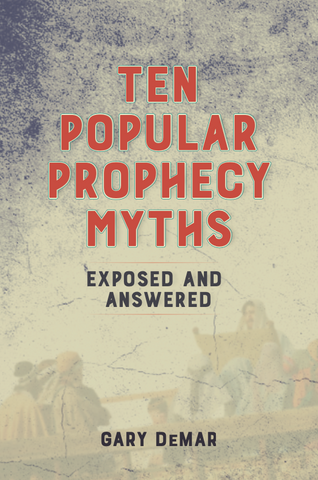Bible Prophecy Under the Microscope-Episode 47
Gary responds to a recent video by end-times speculator Jonathan Cahn about how we are “watching prophecy unfold before our eyes.”
Reading modern-day concepts, whether scientific, geographical, or academic, back into the Bible can cause insurmountable interpretive problems. For example, how many times have you heard a minister claim that the gospel is like “dynamite”? The comparison is made because the Greek word dunamis, translated “power” (Rom. 1:16), is the same word Alfred Nobel chose in 1866 to name his explosive concoction. Since “power” and “dynamite” share the same Greek word (dunamis), the New Testament use of “power” must share the characteristics of dynamite. D. A. Carson describes this as “an appeal to a kind of reverse etymology,”[1] reading modern definitions of words back into ancient writings. The effects of dynamite were unknown by the New Testament writers. Paul was not thinking of exploding sticks of dynamite when he used dunamis to describe the power of the gospel any more than he was thinking about the power expended when the Space Shuttle takes off from Cape Canaveral. Our understanding of the biblical use of dunamis has to be understood in terms of how it was understood in Paul’s day. “[Gordon] Fee and [Douglas] Stuart rightly emphasize that ‘the true meaning of the biblical text for us is what God originally intended it to mean when it was first spoken.’[2] We must first determine what a text meant ‘in their town’ before we can determine what it means and how we should apply that meaning to our own time and culture.”[3]
In a similar way, we should not read twenty-first century geographical knowledge into the Bible. For example, were the cartographers of Jesus’ day wrong when they called the Sea of Galilee a sea rather than a lake (Matt. 4:18)? Our definition of “sea” should not be the interpretive standard for the New Testament. Many commentators misinterpret what Jesus meant when He stated that He would be “three days and three nights in the heart of the earth” (12:40) because they do not understand the statement in terms of Jerusalem-centered geography or in terms of Hebraic idiom. Equally so, we should not read into the Bible our conception of what we now know about our world.

Ten Popular Prophecy Myths Exposed and Answered
Since the reestablishment of Israel in 1948, “end-time” prophetic speculation has been on the rise. While there is a long history of date setting, the past century has seen an exponential increase in the number of books proclaiming that the end is near. It’s time that the “Boy who cried wolf” syndrome be dealt with in a biblical way. Many Christians are beginning to take a second look at the biblical prophetic record. A seismic shift in biblical eschatology is taking place around the world because Christians, some for the first time, are willing to challenge what they have been taught based on what the Bible actually says. Gary DeMar has taken on the task of exposing some of the popular myths foisted upon the public by prophetic speculators.
Buy NowGary responds to a recent video by end-times speculator Jonathan Cahn about how we are “watching prophecy unfold before our eyes.” This parlor trick is very old and has been used thousands of times by many other end-times alarmists. Listeners must be aware that none of this is new, and the current news cycle does not determine what the Bible means or how we do exegesis.
Click here for today’s episode
Click here for all episodes of Bible Prophecy Under the Microscope
[1] See D.A. Carson, Exegetical Fallacies, 2nd ed. (Grand Rapids, MI: Baker Book House, 1996), 34.
[2] Gordon D. Fee and Douglas Stuart, How to Read the Bible for All Its Worth: A Guide to Understanding the Bible, 2nd ed. (Grand Rapids, MI: Zondervan, 1993), 26.
[3] J. Scott Duvall and J. Daniel Hays, Grasping God’s Word: A Hands-On Approach to Reading, Interpreting, and Applying the Bible (Grand Rapids, MI: Zondervan, 2001), 97.

